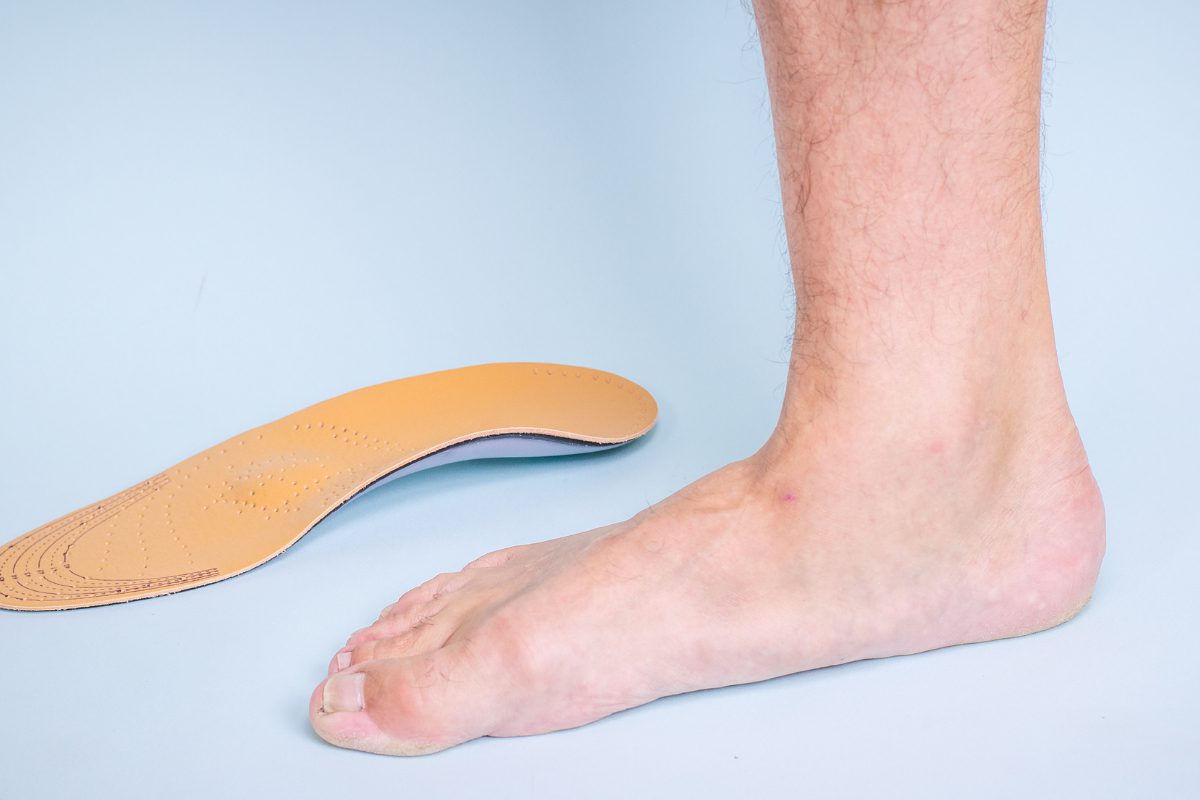
We can divide foot defects into congenital defects – visible in a newborn from birth such as the clubfoot, and the more common ones that reveal themselves after uprighting, such as the flatfoot. Saying that someone has “platfus,” however, does not automatically link it to a fixed procedure. It can be a picture of different disease entities of varying severity. If you suspect a foot defect in yourself, it is worth consulting a specialist, able to properly examine and diagnose the defect present. From the determination of the cause of existing disorders, deformities or pain depends on the success of therapy and the comfort of daily functioning.
Is it possible to walk in minimalist shoes with a foot defect?
This question cannot be answered unequivocally, as it depends on the type of defect, its cause and the complaints present. Each case should be evaluated individually and the appropriate treatment – either conservative or surgical. In the case of conservative treatment with an individual orthotic insole, it can be placed in a minimalist shoe, if for the patient the thin sole, lack of cushioning and heel is not a problem. Due to the volume of this article, individual cases of less common deformities will not be considered. The focus is on the most common ailments, the causes of which can be corrected.
Where do the deformities come from?
Part of the deformity is due to weakened muscle strength and is characterized by the fact that the severity of the defect occurs in dynamics – that is, during walking or running. This may be related to the type of footwear that has been worn so far. If the shoe’s cushioning, hard sole and heel have loosened our foot’s ligamentous and muscular apparatus over the years, abnormal alignment of the joints of the entire lower limb may be evident during a barefoot examination. Such a situation can be solved in two ways: well-fitting orthotic insoles, increasingly cushioned footwear (frequently replaced) and external technologies that position the foot correctly and absorb shocks can be used. The second solution, on the other hand, requires a greater commitment of time and attention from the patient and involves strengthening, or even restoring, the foot’s natural cushioning mechanisms, so that the foot, rather than external aids, becomes responsible for cushioning, shock absorption and proper alignment of the entire lower limb. Wearing minimalist shoes aids the process of foot strengthening, although it is not for all patients and must be used gradually.
What foot problems make it difficult to walk in minimalist shoes?
There are no clear and radical contraindications in the context of wearing minimalist shoes. However, there are groups of people for whom it would be either impossible or problematic to use such footwear in their current condition. Existing inflammation (e.g., of the Achilles, plantar fascia) or a post-surgical condition could therefore be a contraindication to minimalist shoes, since the foot is forced to work intensively in them. Also, people with metatarsalgia, understood as forefoot pain of various origins, or people with peripheral hypersensitivity who feel uncomfortable walking barefoot. In addition, people with atrophy of the fat pad may, especially in the initial phase of adaptation, experience discomfort.
Flat foot
It is one of the more commonly diagnosed and encountered foot defects, and is also associated with features such as Morton’s foot and joint hypermobility.
Flat foot is a physiological variant of the foot in young children. Children are born with a flat foot, with a fat pad visible on the medial side of the foot. Only the beginning of independent walking and loading of the lower limbs affects the formation of the longitudinal arch of the foot and correction of the rearfoot position. At preschool age, the feet and knees enter a period of physiological valgus (although some cases may deviate from the norm and then treatment is needed). Around age 7, the feet and knees should align in an intermediate position, and if this is not the case, it is worth seeing an orthopedist or physical therapist with your child for a check-up.
Flat-foot is a syndrome that consists of abnormal alignment of two components: valgus alignment of the rearfoot (heel) and forefoot alignment in inversion and supination relative to the rearfoot. This is in contrast to the flat foot, which is characterized by correct heel alignment, and all that can be observed is the absence of a longitudinal arch.
Types of flat foot
Classification based on the type of deformity and its cause distinguishes:
- flexible flatfoot – most often caused by dysfunction of the posterior tibialis muscle
- rigid flatfoot, the cause of which can be:
- ankle-foot or heel-foot osteochondrosis,
- congenital flat-ankle foot,
- neurogenic flat-ankle foot.
In the case of flexible deformities, proper strengthening of the muscles of the so-called stirrup of the foot (including the posterior tibialis, long fibula) helps to level the valgus position of the foot. Walking in minimalist shoes can be a good stimulus to stimulate the foot to work. What is needed first is the ability to consciously correct it, because it may be that in the case of large deformities, a sudden switch to shoes without foot stabilization can lead to overload and pain.
The hallux valgus toe
The occurrence of a hallux valgus toe is primarily due to genetics, and can also co-occur in Morton’s foot and the flat foot described above. The type of footwear used can contribute to either exacerbating or reducing an existing tendency. Walking in heeled shoes, with tapered toes that squeeze the toes causing a valgus toe position, can contribute to aggravating an existing defect.
Walking in minimalist shoes offers a number of benefits in supporting the toe in its proper alignment:
- a wide front (toe box) gives the toe the opportunity to position the toe in its correct axis, without valgus;
- the ability to visit the toe box engages the toe abductor muscle and the short muscles of the foot, which in turn benefits the transverse arch;
- correct operation of the toe enables the foot’s cushioning mechanisms to engage;
- flat sole (zero drop) improves the distribution of forces acting on the foot and relieves pressure on the forefoot;
Switching to minimalist shoes with a foot defect
The foot defects described above are associated with weakened or contracted muscles that are unable to hold the foot in proper alignment. In the case of a corrective defect (e.g., corrective flat feet – flexible flat feet), we can, through appropriate exercises and manual work, restore normal biomechanics. Success depends on the degree of deformity, age, regularity of exercise and correct diagnosis. If we were to try to make an abrupt transfer from “classic” shoes with cushioning to minimalist shoes, we may run the risk of injury and the onset of pain. The body needs time and proper adaptation to new tasks. The foot needs to strengthen the muscles, but also stretch and make flexible those that have been contracted so far.
- Tomaszewski R., Czaslawska B., Pediatric flatfoot, Pediatr Med Rodz 2020, 16 (4), p. 368-372
- Kolodziejski P., Bryłka K., Marzec P., Bażant K., Czarnocki Ł., Are historical concepts of treatment of hallux valgus toe still relevant today? Past Medicine and Veterinary Medicine, Environment and Man, 2013, pp. 200-201.
The author of the text is physiotherapist Hanna Krześniak, MA.


Leave a Reply